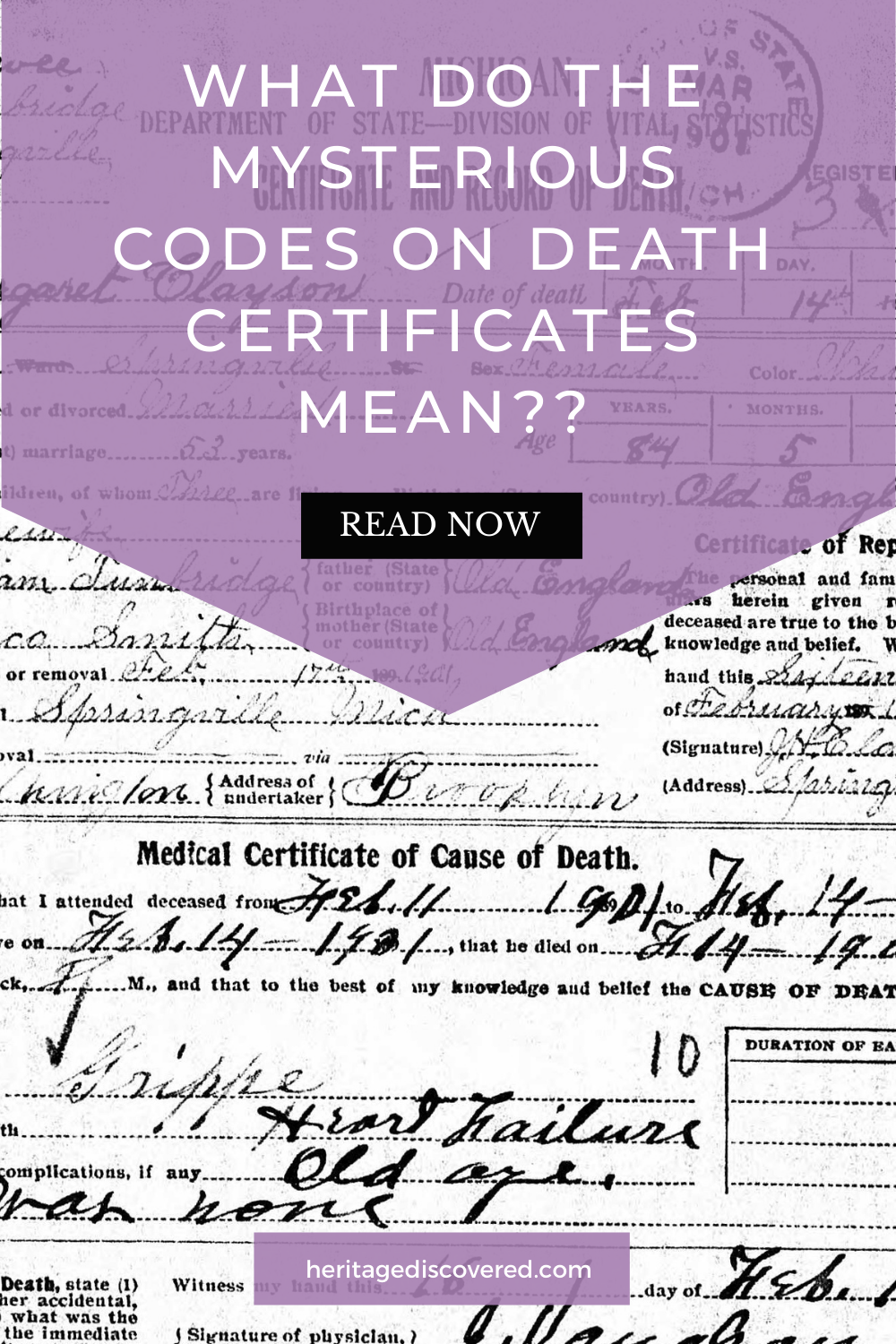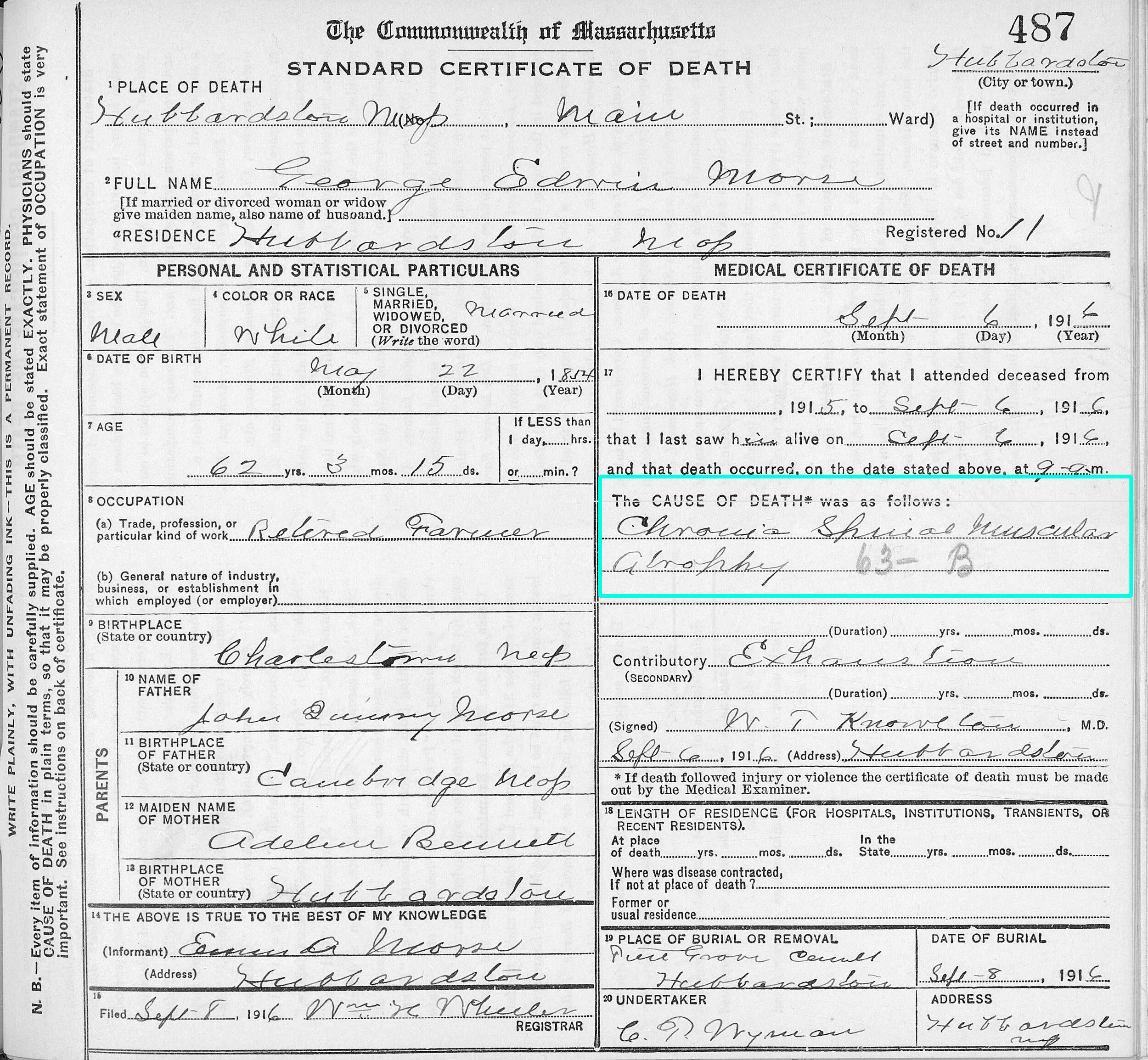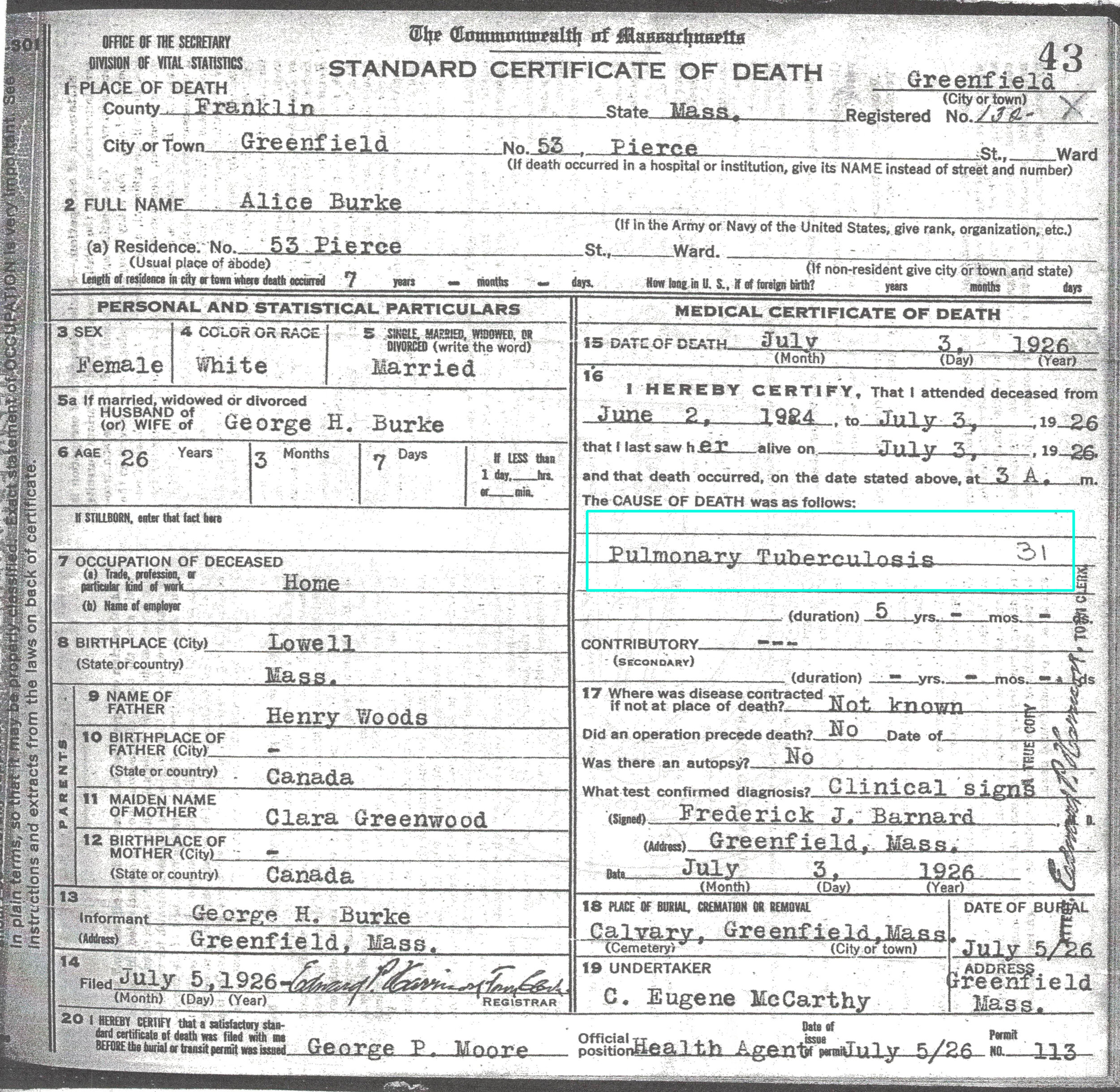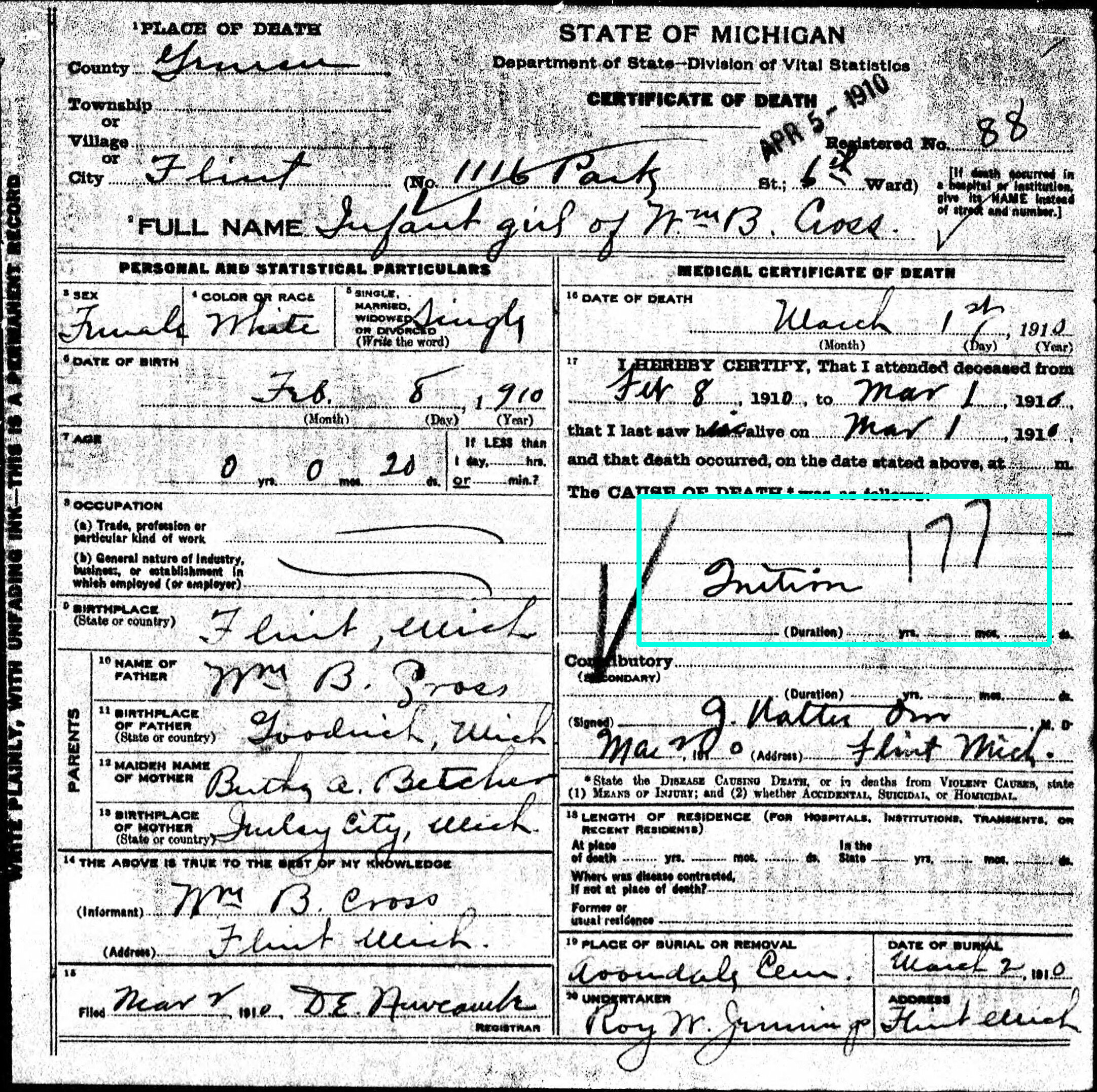Why Should I Decode The Strange Numbers On Death Certificates?
This post may have affiliate links, which means I may receive commissions if you choose to purchase through links I provide (at no extra cost to you). All opinions remain my own.
Finding a death certificate is always a great discovery when researching a family member. They can tell you key things like the names of someone’s parents and where they were born.
But if you dig a little deeper, there’s even more to uncover on many death certificates.
Have you ever noticed cryptic, usually handwritten number codes on death certificates and wondered what they are?
These death certificate code numbers refer to the International Classification of Diseases, a global standard for reporting health conditions and diseases, from birth to death.
Related posts:
5 Things to Look For in Probate Records to Help Trace Your Ancestors
Why Delayed Birth Certificates Are Awesome For Your Genealogy Research
A very short intro to the International Classification of Diseases list
The ICD began in 1893 as the International List of Causes of Death and was adopted in the US in 1898. It’s still used today and is overseen by the World Health Organization.
It's gone through many revisions since its start and is now on its 11th version.
The ICD system was created with 179 categories of causes of death and has grown into the thousands.
Related posts:
How to Strengthen Your Cemetery Research Skills to Find More Clues
How Using Mortality Schedules Can Improve Your African American Genealogy Research
How death certificate ICD codes can help out your genealogy research
Why are these numbers so important for your genealogy?
These cause of death codes aren’t on all death certificates, but if you see one noted, try looking it up to see what it stands for. Although causes of death are already on certificates, the ICD codes can give more insight about what medical issues your ancestor had.
Learning what the code stands for can add richer detail to your family history.
For example, the below death certificate from 1916 gives the cause as chronic spinal muscular atrophy. The code 63-B was added in.
Looking at the 1909 version of the ICD, this code stands for poliomyelitis, or polio as it’s better known.
Most people have heard of polio, so learning that your ancestor had it could make more sense to you than learning they had chronic spinal muscular atrophy. From there, you can research polio to learn what they might have experienced.
Related posts:
How Probate Records Can Help You Find Your Female Ancestors
12 Tips For Getting Back Focus And Motivation In Your Genealogy Research
How to look up ICD codes
Once you spot the ICD number, you’ll want to decode it to understand what it means. This means finding the correct version of the ICD list.
The ICD was created in 1900 and updated in 1909, 1920, and about every 10 years after through 1990.
When you look up a code, be sure you’re using the right version for the time or you could find an incorrect diagnosis.
You can find the codes for the various versions here. Choose the one that the death would fall under. For example, if someone died in 1928, you’d use the 1920 version. But if they died in 1930, you’d use the 1929 version.
This death certificate for my great grandmother, Alice Dubois, says she died of pulmonary tuberculosis. The code number 31 has been written in. Looking at the version for 1920, 31 stands for tuberculosis of the respiratory system. Other codes are for TB in other parts of the body.
This certificate names what looks like “inition” as the cause of death, with a code of 177. This word is actually inanition, which still doesn’t clearly explain what the cause was for many people. Searching for code 177 shows this means starvation.
So, if you spot one of these codes on a death certificate, be sure to look it up and see what you can learn from it!
Sometimes the ICD code says the same thing as the cause of the death on the certificate. But, sometimes there’s more detail, like in the examples I've shared. The extra information may help you better understand what disease or condition your ancestor had.
Have you seen these codes on any of your ancestors’ death certificates? Did you try to look them up?
Final thoughts
It can be really easy to miss the ICD code on a death certificate, especially if you uncover an exciting fact, like where someone was born.
But it’s good practice to keep an eye out for them and look them up. You may find out deeper insight about what happened to your ancestor, which adds even more to your family story.
Related posts:
Everything You Need to Know About Using Home Sources
How to Organize Your Genealogy Files
Why You Need a Genealogy Research Log
If this post was helpful, please consider “buying me a coffee”. Tips through Ko-Fi help me create more content like this for you!





